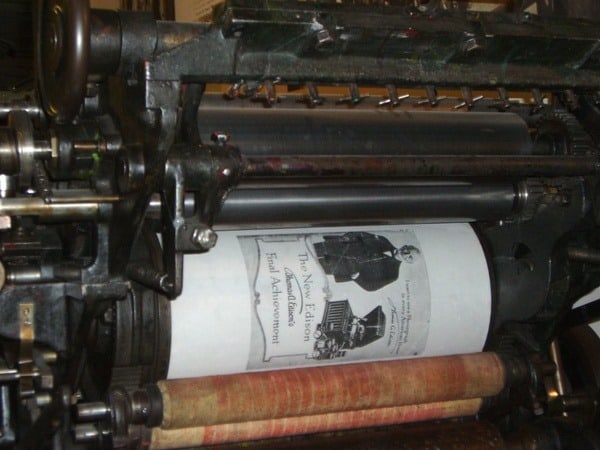An inter partes review (IPR) is a procedure for challenging the validity of a United States patent before the United States Patent and Trademark Office (USPTO).
An IPR is used to challenge the patentability of one or more claims of a patent that’s already been granted – essentially arguing that the USPTO made a mistake in granting it.
The only grounds for an IPR arise under 35 U.S.C. §§ 102 and 103.
Section 102 states:
A person shall be entitled to a patent unless—
- the claimed invention was patented, described in a printed publication, or in public use, on sale, or otherwise available to the public before the effective filing date of the claimed invention;
[Emphasis added.]
Section 103 deals with obviousness. In order to be patentable, a claimed invention must not have been obvious to a “person having ordinary skill in the art” (PHOSITA) in view of the appropriate prior art.
So what’s “prior art”?
As the European Patent Office (EPO) explains,
Prior art is any evidence that your invention is already known.
Prior art does not need to exist physically or be commercially available. It is enough that someone, somewhere, sometime previously has described or shown or made something that contains a use of technology that is very similar to your invention.
A prehistoric cave painting can be prior art. A piece of technology that is centuries old can be prior art. A previously described idea that cannot possibly work can be prior art. Anything can be prior art.
An existing product is the most obvious form of prior art. This can lead many inventors to make a common mistake: just because they cannot find a product containing their invention for sale in any shops, they assume that their invention must be novel.
The reality is very different. Many inventions never become products, yet there may be evidence of them somewhere. That evidence – whatever form it may take – will be prior art.
Patent attorneys commonly conduct prior art searches for their clients seeking to patent new inventions, to try to determine whether any such prior art exists that would lead to the patent not being granted – or to it being invalidated via the IPR process.
It’s usually sensible to perform such a search before investing a significant amount of time and money in drafting and prosecuting a patent application.
However, to be relevant prior art can’t just be buried in some inaccessible bank vault.
As the Patent Trial and Appeal Board (PTAB) said in Hulu, LLC v. Sound View Innovations, LLC,
the petition must identify, with particularity, evidence sufficient to establish a reasonable likelihood that the reference was publicly accessible before the critical date of the challenged patent and therefore that there is a reasonable likelihood that it qualifies as a printed publication.
In a recent decision, the PTAB found that the petitioner failed to demonstrate a reasonable likelihood that the primary prior art reference was publicly accessible.
In Topcon Medical Sys., Inc. et al v. Car Zeiss Meditec, Inc. the petitioner challenged the validity of a patent for “displaying combined [ophthalmologic] structural and functional progression information to a user.”
The prior art article was allegedly published online in the summer of 2016, but the copy that the petitioner submitted didn’t have a publication date.
The petitioner submitted an affidavit from the Internet Archive stating the article became available as early as July 18, 2016. However, there was an issue about whether a key illustration was part of that original online publication.
The PTAB found that the Internet Archive material wasn’t sufficient evidence of the publication of the entirety of the article, including the illustration, more than one year before the filing date of the patent at issue.
Just like the haiku above, we like to keep our posts short and sweet. Hopefully, you found this bite-sized information helpful. If you would like more information, please do not hesitate to contact us here.


